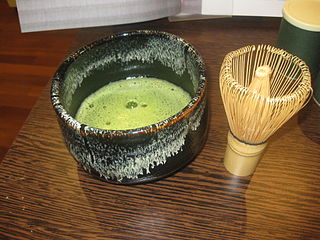| Noticias |
Tea Ceremony
por Raphael
What we call “tea ceremony” in English is, in Japanese, referred to simply as “chakai,” a “tea gathering.” Although these gatherings are not ceremonial in the religious sense, they carry a profound spiritual element. The Japanese art of tea emphasizes above all the bond between the participants. The host prepares everything with extreme care to extend his heartfelt hospitality toward his guests, and the guests behave so as to express the utmost consideration for one another and their host. The simple, yet profound experience epitomizes the Zen Buddhist ideals of harmony, respect, purity and tranquility.

Tea ceremony practices vary according to location, season, and guests. Usually, they begin around noon, but in the summer, when the days can be very hot, ceremonies may start as early as six in the morning. In the modern era, evening ceremonies for working people have also begun to appear. At formal ceremonies, guests first pass through a rustic garden featuring few colorful flowers. This garden is meant to calm the spirits of the guests and put them in the proper state of mind to experience a tea ceremony. Guests pause on a bench and take in the view, then approach the tsukubai, a stone basin where guests ladle purifying water into their hands and mouths to further prepare themselves. Finally, the guests reach the nijiriguchi, a narrow entrance at which they often have to stoop to enter. The host and guests enter the carefully prepared room and view the understated, elegant space in which they are about to share a significant moment.
The host will have carefully selected implements for the ceremony which complement the gathering’s season or theme, the space, and the guests themselves. Sweets, also often reminiscent of the season, are served first. The delicate sweet flavors offer a contrast against which the mild bitterness of the tea will be accentuated. The host prepares and serves the tea with spare, graceful gestures known as “temae.” The subtle movements help the guests feel at once welcomed and cared for. The host scoops powdered tea into the tea cup, ladles hot water over it, and then mixes it with a bamboo whisk until it is frothy. In formal tea ceremony, only one tea cup is used. After the host presents the tea to the guests, they also have a set of actions to perform. Before each guest drinks, she turns the bowl slightly so that her mouth will not rest on the front, but the front will face instead toward her host. She wipes the rim of the bowl with a cloth in consideration for the next guest, then turns the cup again so that the front will face the next guest. These kind actions express mutual consideration and warmth between the guests, a vital aspect of tea ceremony.Reflection of the season is very important for tea ceremony. There is usually a scroll displayed in the tokonoma alcove which bears a phrase or picture evocative of the season, and simple seasonal flower arrangement is also often present. There are also different tea ceremonies held at different times of year. In January, tea schools hold a “hatsugama” ceremony, where students and their acquaintances share tea to celebrate the new year in an auspicious and festive atmosphere. In early spring at the Kitano Tenmangu Shrine in Kyoto, geisha serve tea as ume blossoms are offered to the gods. In the autumn, when the full moon is at its most beautiful, there are outdoor tea ceremonies. In the Hamarikyu Gardens, guests listen to ancient court music as they sip tea, while at the Saidaiji in Nara, tea is prepared in a few gigantic bowls, originally offered to the Buddha, which are then passed around amongst the guests.
“Matcha,” the powdered green tea that is consumed at tea ceremonies, first came to Japan in the 12th century, brought by the priest Eisai upon his return from China. By the 16th century, wealthy Kansai merchants were competing with one another in their display of opulent implements at their ostentatious gatherings. Warlords such as Toyotomi Hideyoshi also showed off their power by exhibiting impressive spaces and tools at their tea gatherings. Hideyoshi himself had a tea room built entirely of gold. Since negotiations were frequently carried out at tea gatherings in those days, such indirect boasting could impress one’s opponent by showing one’s financial clout, power and prestige.
In the same century, famous tea master Sen no Rikyu protested against such excesses. Sen no Rikyu’s philosophy emphasized the importance of intimacy between host and guests. According to his ideals, the relations between people were not to be affected by rank or position. Guests were to meet on equal terms within a physically close space that encouraged a deeper sense of closeness between people. Physically brought close, being confined within a set of ritualized practices also brought people closer on a spiritual level. Even sharing the same bowl was a metaphorical way for the lips of the guests to touch, underscoring the close, warm relationships being forged at the ceremony. Sen no Rikyu offered the advice to “let the tea be simple and your hospitality heartfelt,” a philosophy which continues in modern-day tea ceremony.
Today, there are even schools that hold tea ceremony for children. The children make the sweets and decorate the cups themselves, then each invite one parent or grandparent to the ceremony. The offering of tea from child to parent expresses a sense of gratitude and love. Even at the most creative, contemporary gatherings, the principles of tea ceremony remain the same: hospitality is shared and consideration expressed. Above all, a special moment in time is savored as a once-in-a-lifetime encounter. A tea ceremony can be experienced only once, and thus creates a precious memory for both host and guests.
Photo credits:
| Aucun commentaire |


















